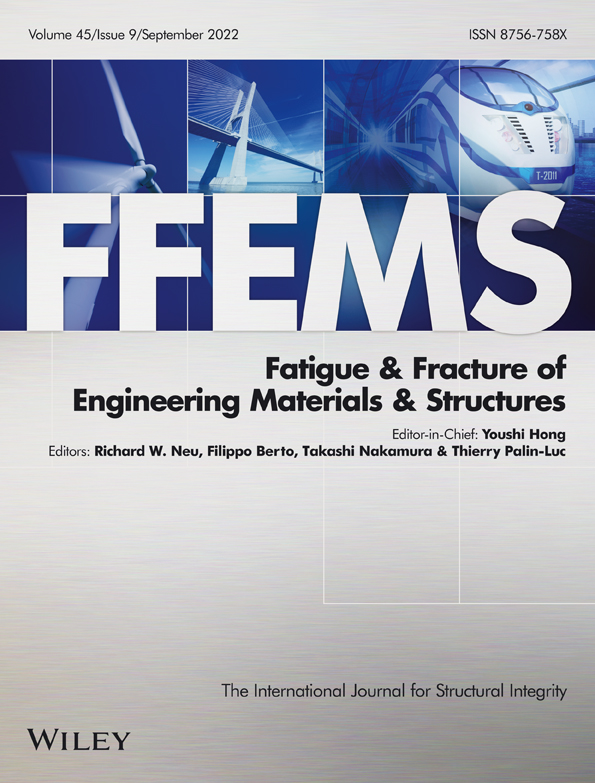Fatigue behavior and electromechanical properties of additively manufactured continuous wire polymer composites for structural health monitoring
Funding information: Natural Sciences and Engineering Research Council (NSERC) Canada
Abstract
The fatigue behavior of continuous wire polymer composite (CWPC) fabricated by fused filament fabrication (FFF) was investigated. Four compositions were examined: polylactic acid (PLA), PLA with copper wire (Cu), thermoplastic polyurethane (TPU), and TPU with Cu wire. Residual properties were measured after different sets of number of cycles (102, 104, 105). Residual strengths were 89.7% and 70.5% of the ultimate tensile strength of the original material after 105 cycles for PLA CWPC and TPU CWPC, respectively. A one-way analysis of variance (ANOVA) statistical tests showed insignificant changes in the residual strengths of PLA-based materials after an increasing number of cycles and significant changes for the TPU-based materials. CWPC electromechanical properties under fatigue test demonstrated reverse piezoresistance behavior. A strain-controlled fatigue life analytical model was compared with the experimental results showing good agreement. This study demonstrates the applicability of FFF technique to print sensors with continuous integrated wire with tunable properties.
CONFLICT OF INTEREST
The authors declare that they have no known competing financial interests or personal relationships that could have appeared to influence the work reported in this paper.
Open Research
DATA AVAILABILITY STATEMENT
The data that support the findings of this study are available from the corresponding author upon reasonable request.




